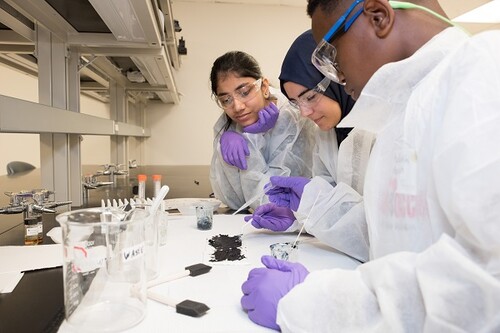
Dave Hiller, Ph.D., a research scientist in MB&B, recently published a column in Nature advocating for the value of incorporating public outreach into a scientific research career. Hiller is a member of Dr. Scott Strobel’s group, which he joined in 2006. He is also the founder of Stempogo, a STEM education business.
In his column, Hiller shares his own story and offers advice on everything from finding your first outreach opportunity to making outreach a core element of your scientific career. He underscores how outreach can benefit everyone involved – kids get to explore their scientific curiosity alongside both peers and experts, and scientists get to practice explaining their work and its impact clearly.
Hiller writes that he initially got involved in outreach by mentoring students for the New Haven Science Fair and participating in other one-day events. He recommends these one-day events as a great way to explore different types of outreach roles. “These programmes can usually take new volunteers, and you will often be able to start with small time commitments,” he writes. Outreach opportunities can be found through university or departmental newsletters, and by following campus organizations such as Yale Pathways to Science.
As a researcher, time can feel like a valuable resource. Acknowledging this, Hiller closes with advice on making time for outreach. He asserts that finding time for outreach is all about finding the right program and role that fits in with your other commitments. “Seeking that fit is key to feeling valued and having success in outreach,” Hiller writes. He also emphasizes that devoting time to outreach does not need to detract from an impactful research career. On the contrary, public outreach can be beneficial to both an individual researcher as well as scientific advancement as a whole. To read Dr. Hiller’s column please see the link below.
Image caption: At the 2018 West Campus Pathways to Science Festival, students made their own paint with guidance from scientists from the Institute for the Preservation of Cultural Heritage. (Photo credit Karen King)
Link to article: https://doi.org/10.1038/d41586-021-01518-6
Link to Yale Pathways to Science: https://onha.yale.edu/initiatives/public-schools-and-youth/pathways-science
By Melanie Reschke